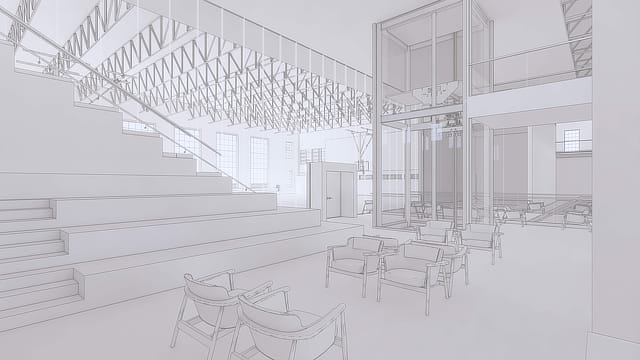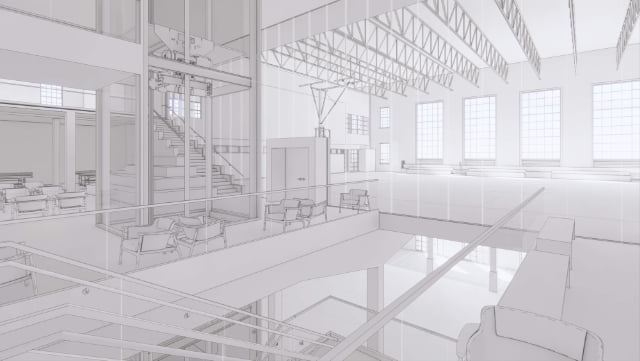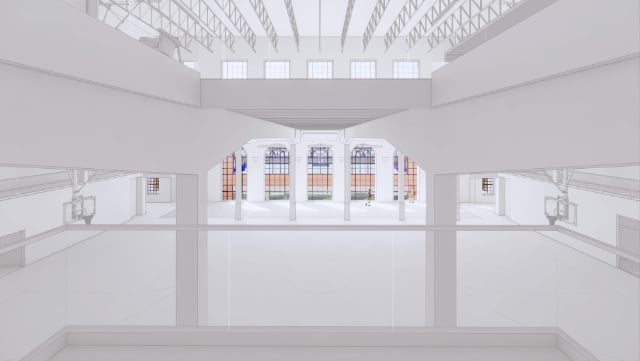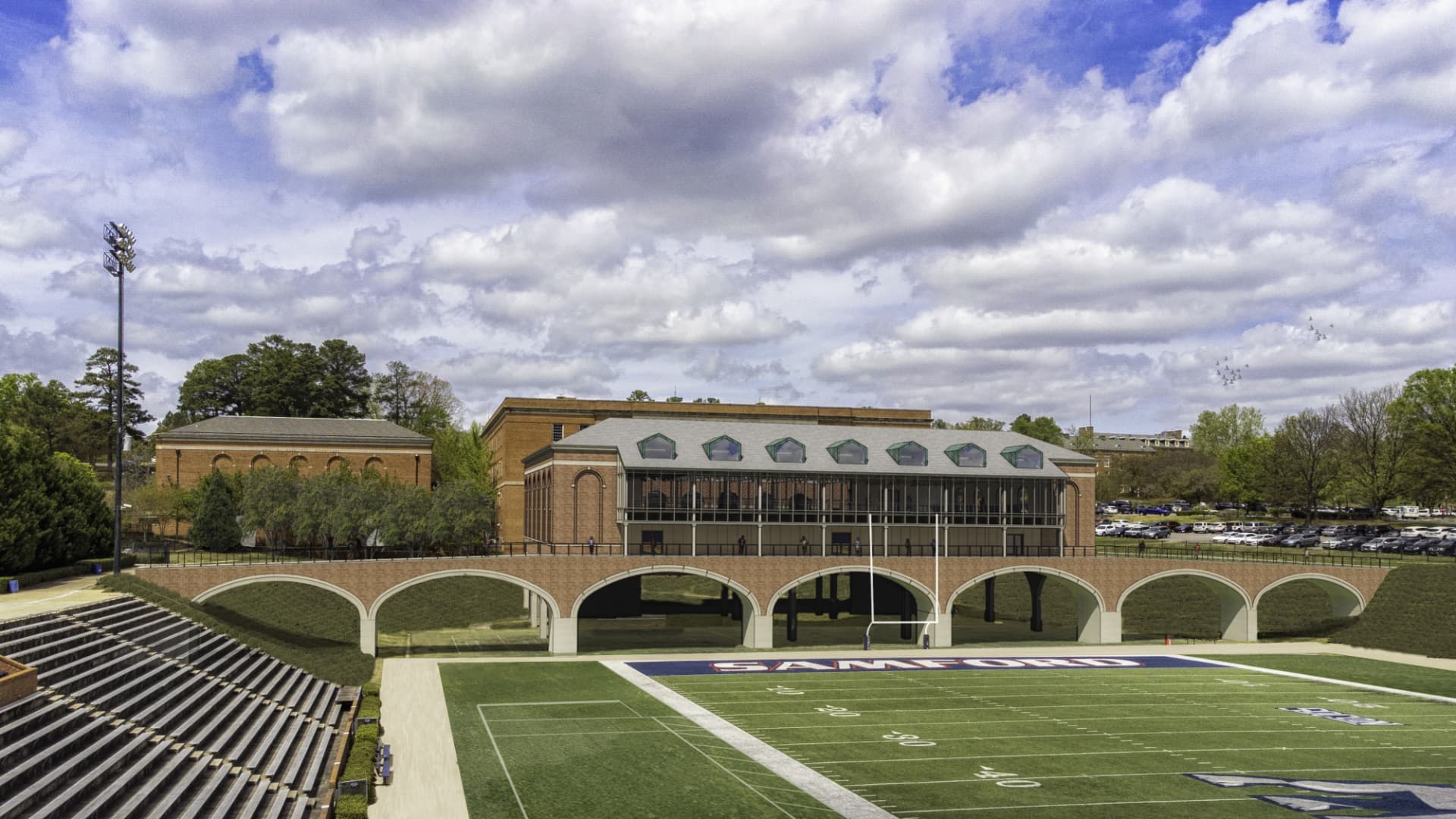Samford University will enlarge and renovate existing buildings to create a new state-of-the-art recreation and athletic complex, university officials announced today. This historic project will create a world-class campus complex providing students and employees with expanded opportunities to improve physical fitness and mental wellness as well as new spaces for campus events and student gatherings. Additional facilities will provide new practice and training spaces for the university’s 17 Division I athletic teams.

The new complex is part of a comprehensive plan for expanded student recreation, health and wellness. The $65 million venture is the largest capital project in the university’s history.
Construction, which is scheduled to begin in early 2023, includes investments in four separate buildings totaling 165,000 square feet:
- Seibert Hall will be completely redesigned to include two basketball courts, a new multi-use court, studios for fitness classes, an e-sports studio, dance studios, state-of-the-art weight and cardio machines, a multi-purpose workout area, and common areas for students to gather, with lounge areas, a coffee house and a 24-hour convenience store.
- Bashinsky Field House will be a fully refurbished, dedicated facility for Samford student-athletes, including new training spaces for teams and dedicated practice spaces for the men’s and women’s basketball and volleyball programs.
- A third building will be constructed adjacent to Seibert Hall and encompass 20,000 square feet of recreation and event space. The new facility will include a suspended indoor track, additional basketball courts and cardio spaces, sound and staging to host campus events, a catering kitchen, covered outdoor athletic space, a pedestrian walkway and a covered balcony that overlooks Bobby Bowden Field.
- The first floor of the Dwight and Lucille Beeson Center, located directly across the street from the complex, also will be renovated to serve as the new home for the university’s health center and counseling services.

Cumulatively, the new and enhanced spaces throughout these four buildings will not only enhance student wellness and life on campus, but will also help recruit and retain future students and student-athletes.
“This project represents a substantial investment in the health and wellness of our students. We are committed to supporting our students in their educational and spiritual journeys, and we also want to support them in their physical and mental wellbeing,” said President Beck A. Taylor. “This new facility will enhance campus life and provide students with spaces to gather, exercise, socialize and participate in numerous recreational activities.”

“Students want to lead a healthy lifestyle and we want their university to provide them with opportunities to do so,” Taylor said. “From physical fitness and recreation to counseling and health services, this facility will meet students’ needs in mind, body and spirit.”
The university is funding $45 million of the project with current resources and is working to secure $20 million in philanthropic gifts. Samford has partnered with Hoar Construction and Davis Architects to design and build the complex.
The complex is expected to be completed prior to the start of the fall 2024 semester.

